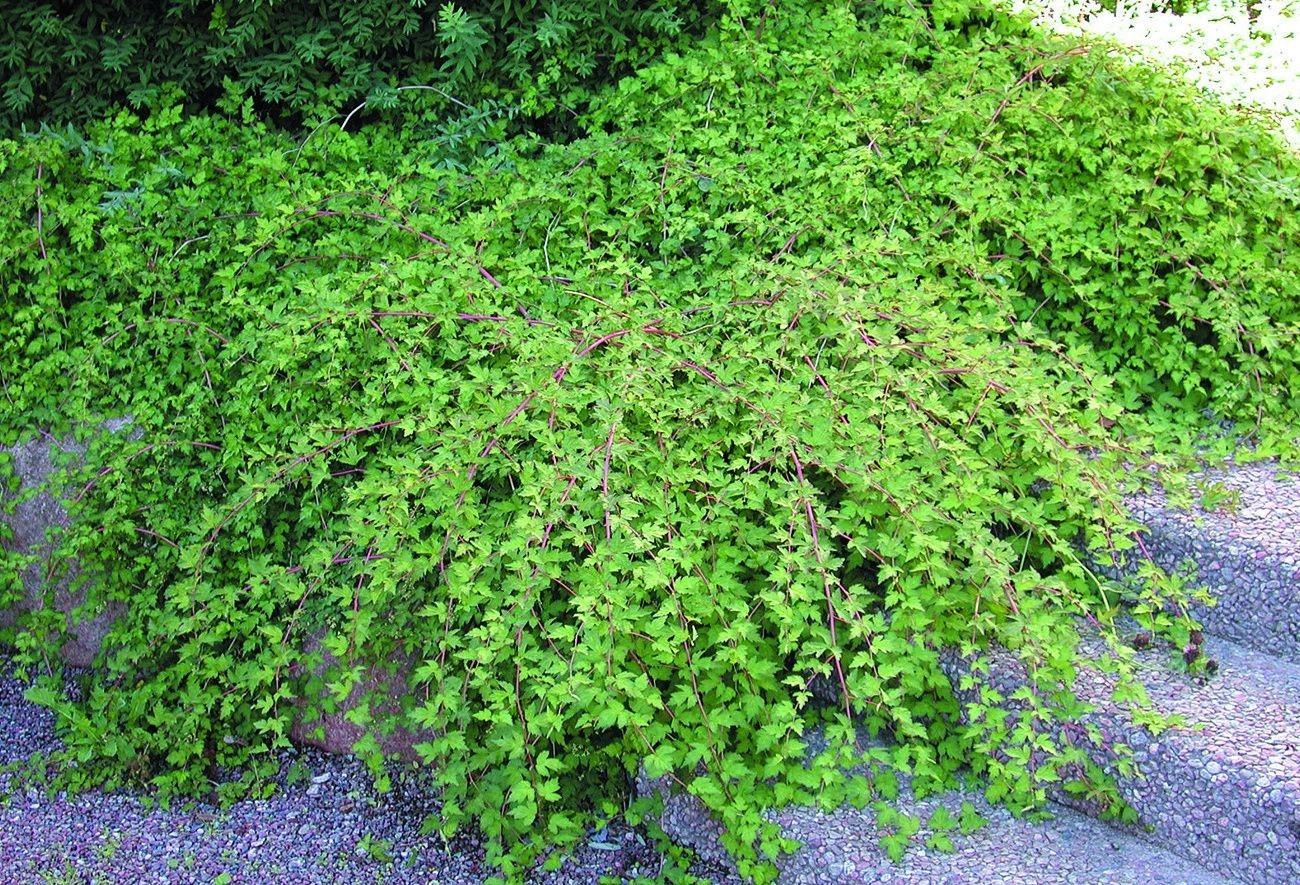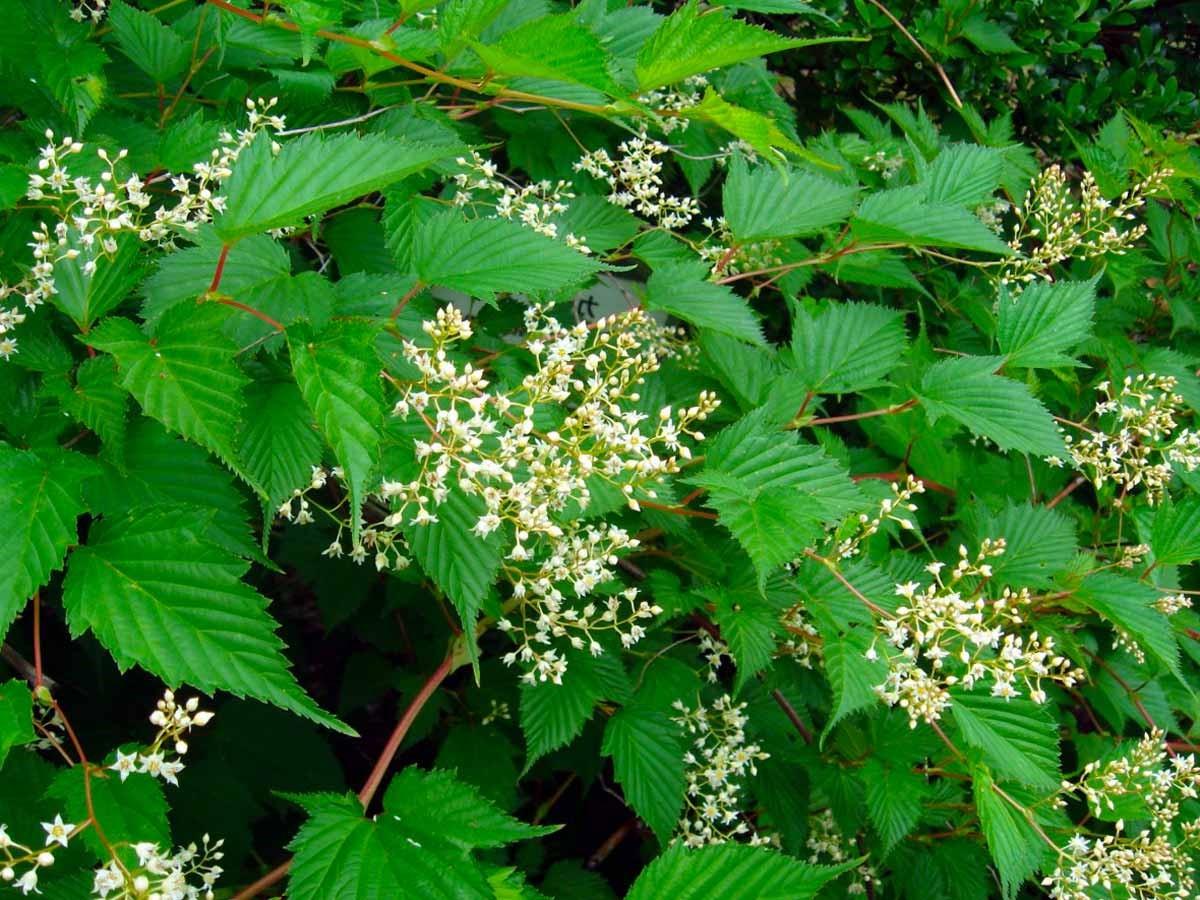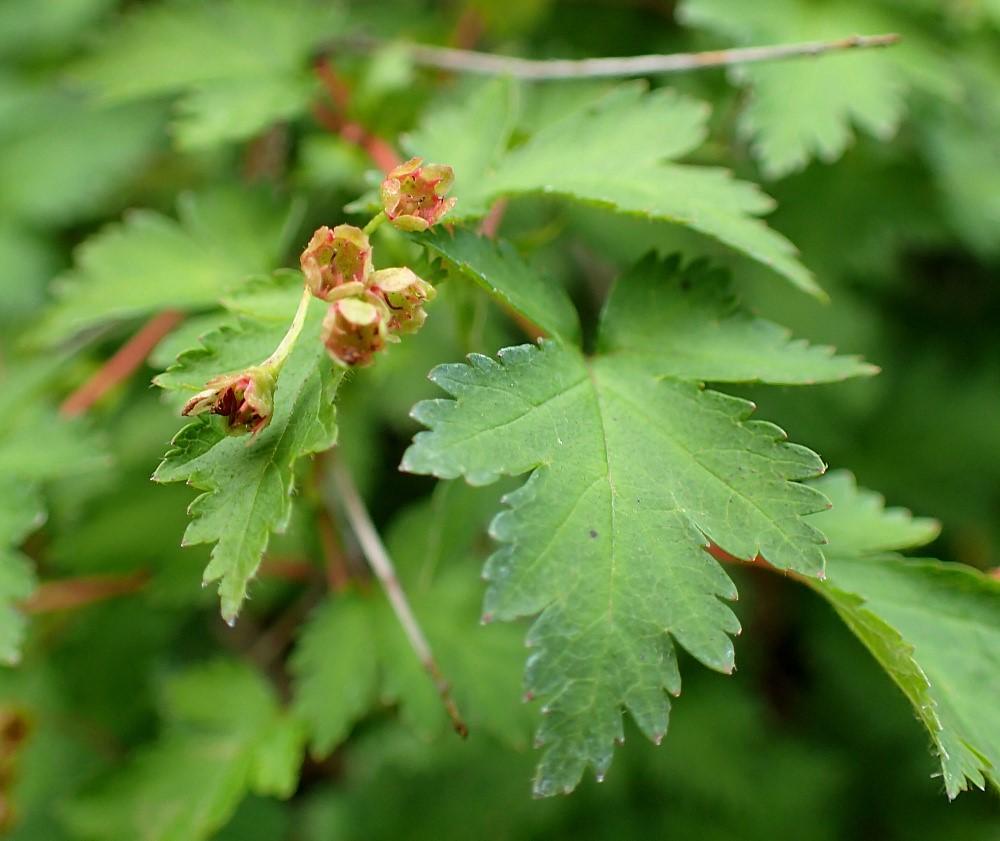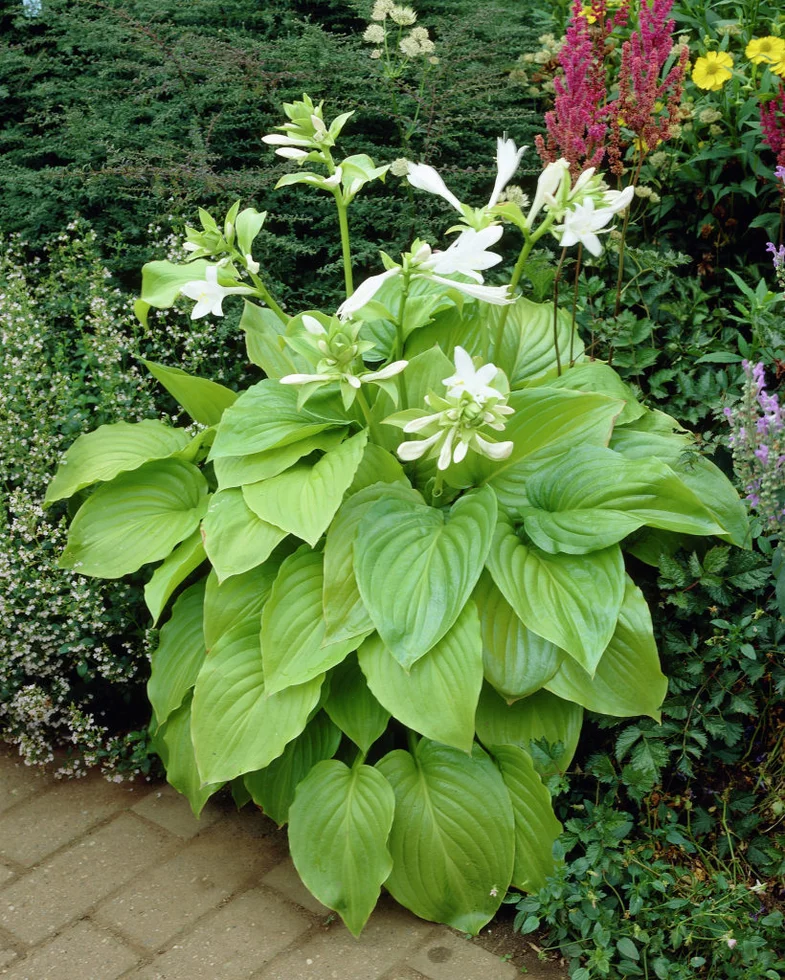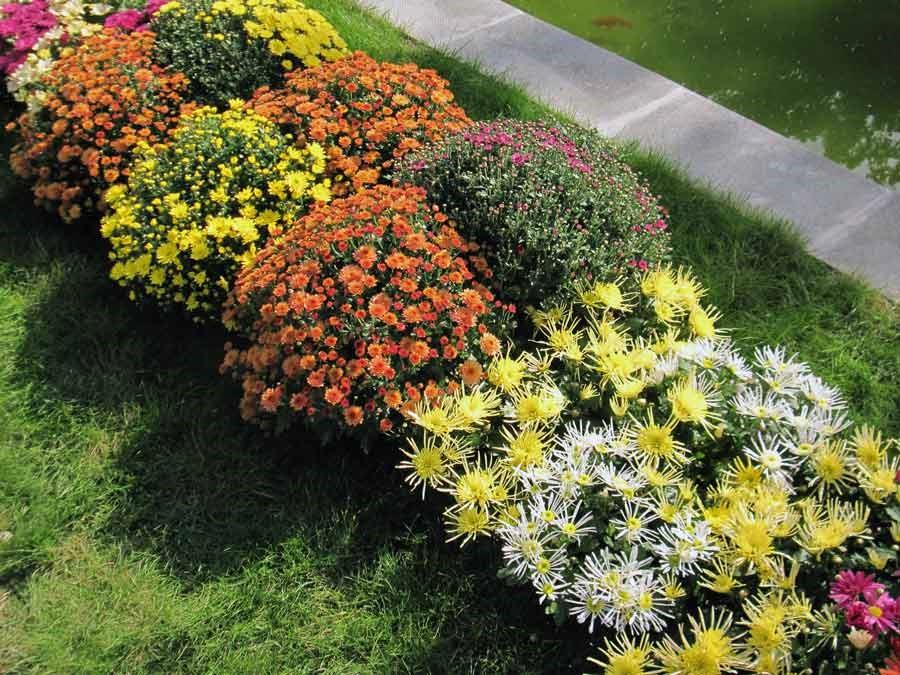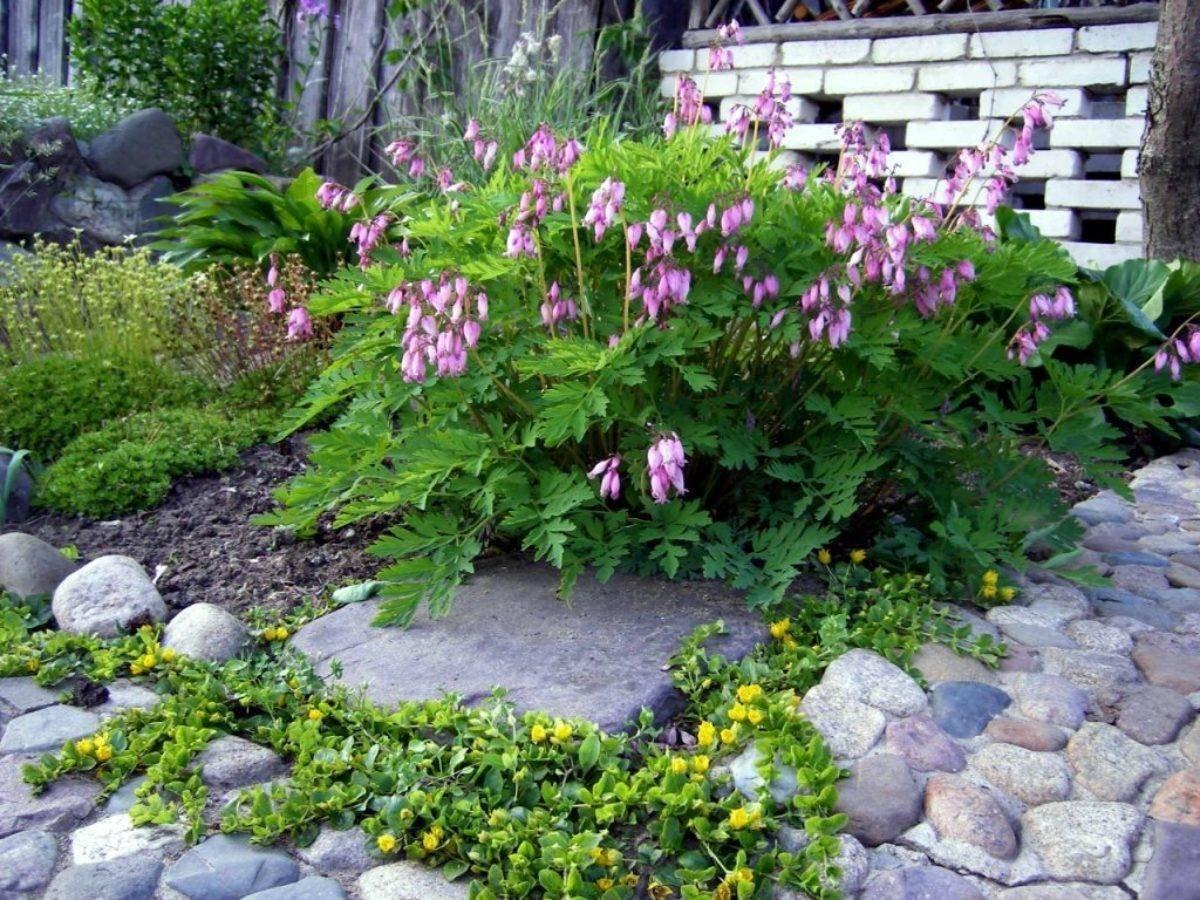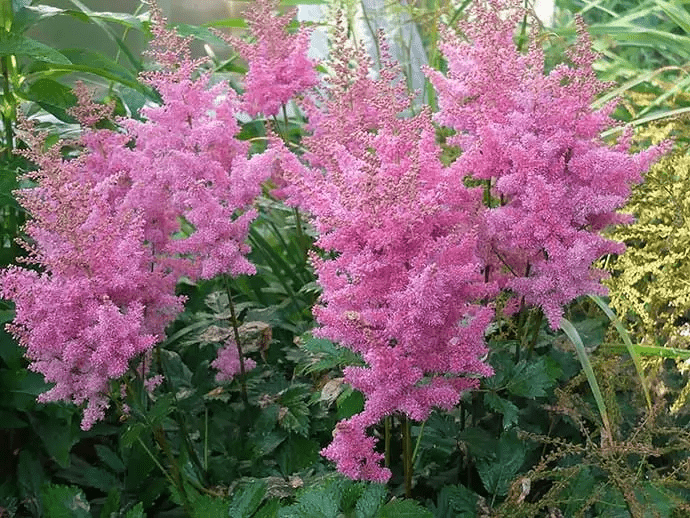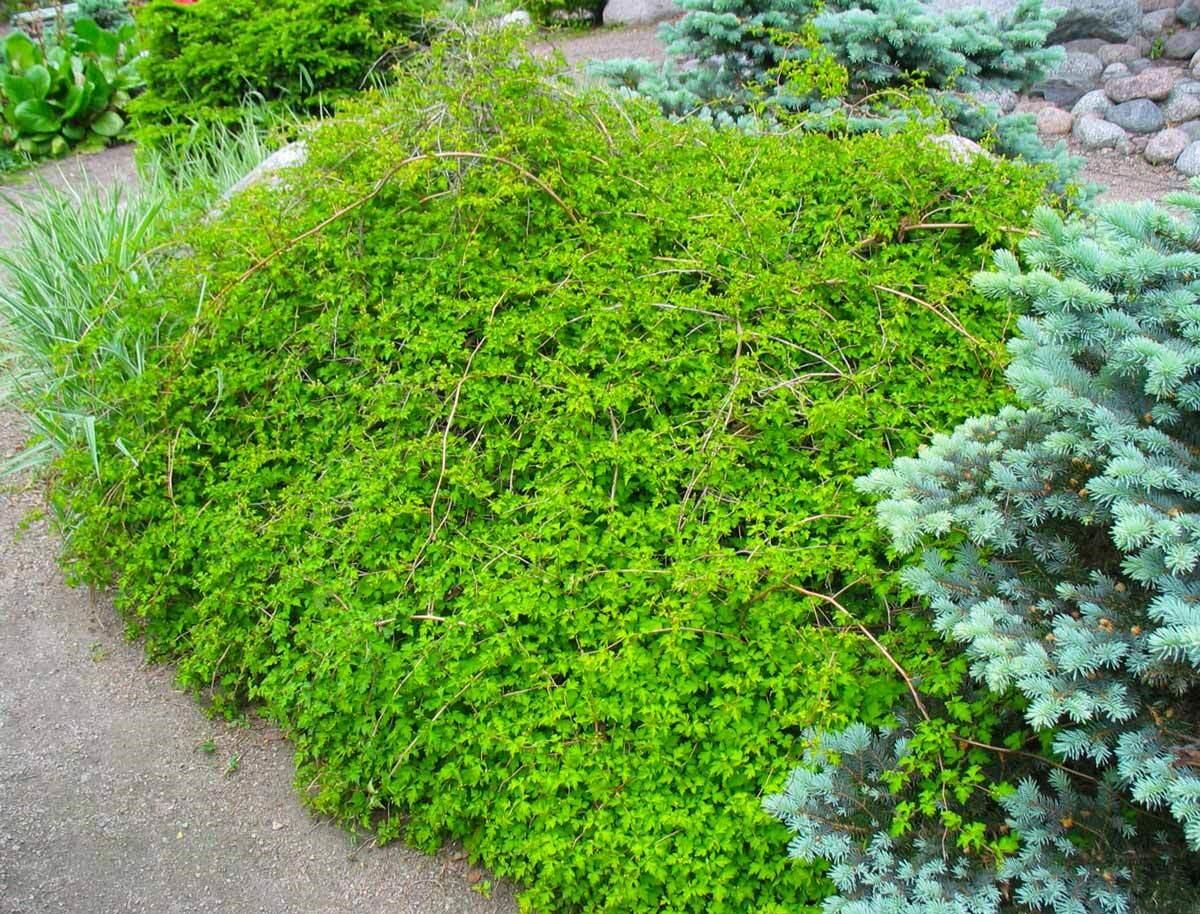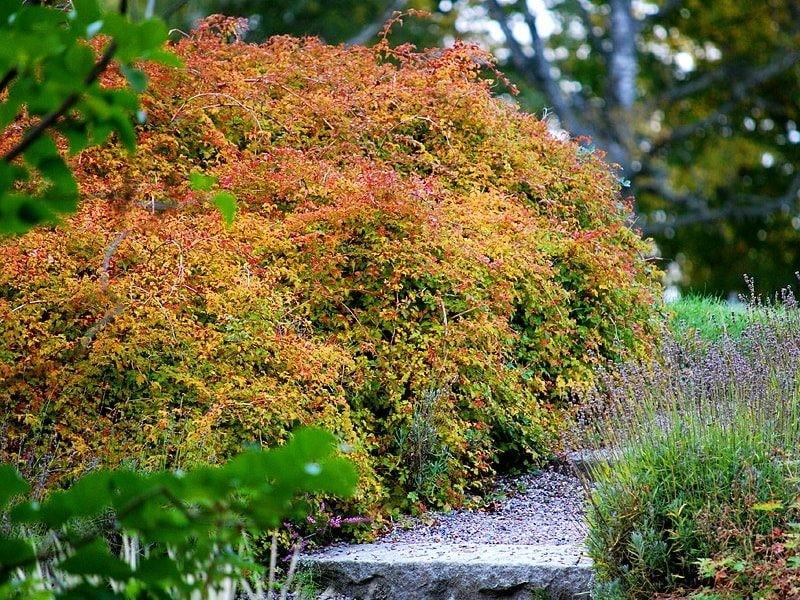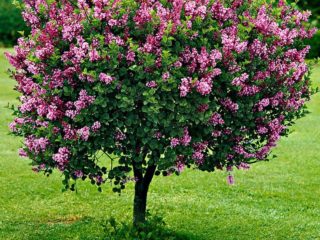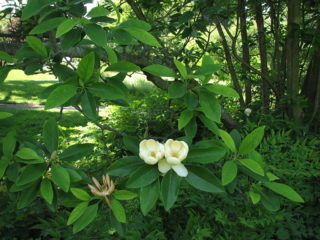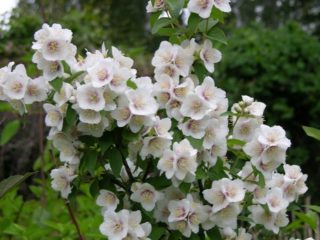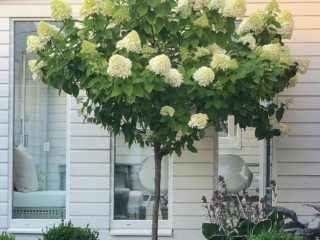Content
Photos and descriptions of the stephanandra bush allow you to get a general idea of this plant. This is a bush that spreads well to the sides and forms an almost symmetrical crown. It is quite easy to take care of it - you need to do timely pruning in early spring, as well as after flowering. It is worth considering that the plant is moisture-loving. How to properly plant and care for shrubs is described in detail in this article.
Description and photo of Stefanandra
Stefanandra is a perennial plant belonging to the Rosaceae or rose family. It produces quite a lot of thin branches that bend well, hang somewhat and do not break. Young shoots are green, quickly turn burgundy, and have a glossy surface.
Stefanandra is an ornamental shrub; it remains attractive throughout the season thanks to its beautiful branches and leaves. The plates are shaped like maple leaves. They are quite large, reaching 10 cm in length. The leaf blades have a dissected shape. The color is rich green, changing to pink, orange and gold in the fall.
The shrub produces small white flowers. They are organized into inflorescences (loose panicles) and appear in large numbers, but only for a few weeks. Flowers of both sexes are located on one bush. At the end of summer, fruits appear - leaflets.
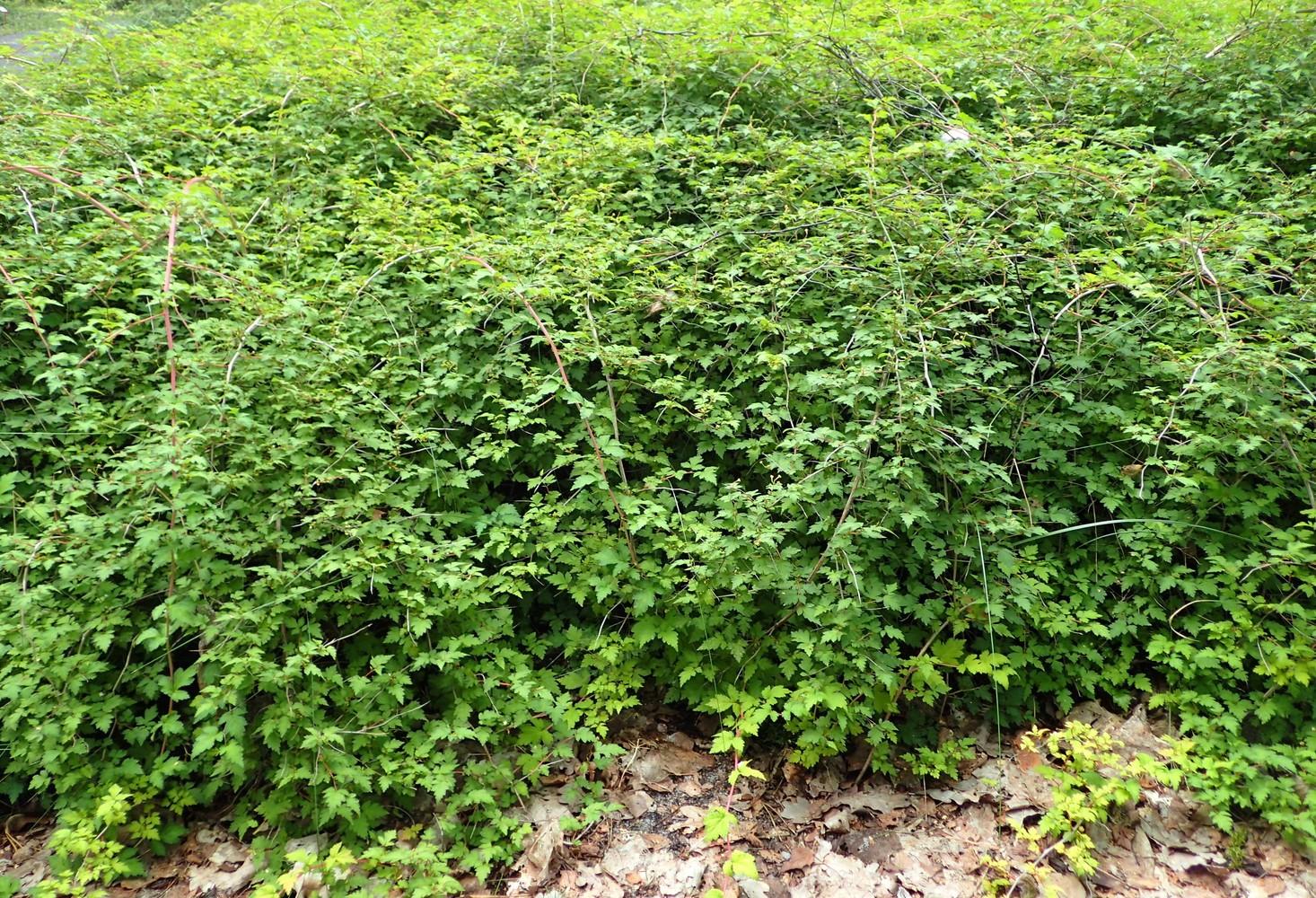
Stefanandra is often used as a ground cover shrub.
Frost resistance of stephanandra
The shrub can easily withstand frosts down to -28 degrees. Stefanandra is characterized by fairly good winter hardiness. This means that such a crop can be grown in almost any Russian region, with the exception of the north and certain regions of Siberia.
Stephanandra height
Stefanandra is a small shrub. It grows up to 2-2.5 m. If grown in the garden, most varieties produce shrubs only within 1-1.5 m, often even 0.5 m. However, the crown is spreading, the branches bend in an arc, so the plant looks quite beautiful. The length of the shoots often reaches 2 m. Thus, the shrub spreads up to 4 m wide.
Types and varieties of stephanandra
There are only four species of stephanandra shrubs, and in natural conditions they are found in Japan and Korea. Based on some varieties, breeders have developed cultivated varieties that can be grown in different Russian regions:
- Incised leaf (Stephanandra incise) is a low shrub that grows only up to 50 cm. At the same time, stephanandra spreads up to 2 m in width.Flowering occurs from June to July. The flowers are small, white in color, arranged in panicles. They can last a long time when cut – up to 3-4 weeks. The shoots are thin, arched, and form an elegant crown.
- Tanaka (Stephanandra tanakae) - reaches a height of 2 m and a width of 3 m. Blooms from July to August. The shrub produces fairly large leaves, and they have a simpler shape compared to incised leaves. The flowers are small, with a greenish tint.
- Crispa is a fairly compact shrub, spreading up to 150 cm in width. At the same time, it grows only up to 80 cm, sometimes up to 50 cm. This stephanandra is used as a ground cover. Produces fragrant white-green flowers.
How to plant stephanandra
It is best to plant stephanandra shrubs in sunny areas. But planting in semi-shady and even shady places is allowed. The seedlings will take root, but the growth rate will be slow and the flowering will not be too abundant.
When choosing a place for this plant, you need to pay attention to a few more points:
- The site should not be located in a low-lying area to avoid flooding by rain and melt water, otherwise the root system will begin to rot.
- If possible, the place should be protected from draft winds, especially from the north side of the garden.
- Stefanandra grows well only in fertile soils, such as loam or sandy loam. It should be nutritious and loose, with plenty of peat, compost and sand. The reaction is slightly acidic or neutral pH = 6-7.
Stephanandra shrubs are planted in the spring. If you do this in the fall, you need to do it a few weeks before the first frost. It is best to plan work for mid-September. The sequence of actions is as follows:
- They dig and mark several holes at a distance of at least 2 m. The width and depth should be 60 cm each.
- Place small stones 10 cm high on the bottom.
- Place a stephanandra bush seedling and add fertile soil.
- Slap the ground a little so that the neck is level with the surface.
- Water abundantly, and the next day lay mulch.
Stephanandra care
To obtain a beautiful shrub, it is necessary to create suitable growing conditions for stephanandra incisifolia or another species. First of all, good lighting and regular watering. It is equally important to fertilize, periodically loosen the soil and do pruning.
Watering and fertilizing
One of the basic rules for caring for stephanandra shrubs is related to watering. The plant does not tolerate drought well and can quickly wither if there is a lack of moisture. Water should be given as the soil dries out - 1-2 times a week, depending on weather conditions.
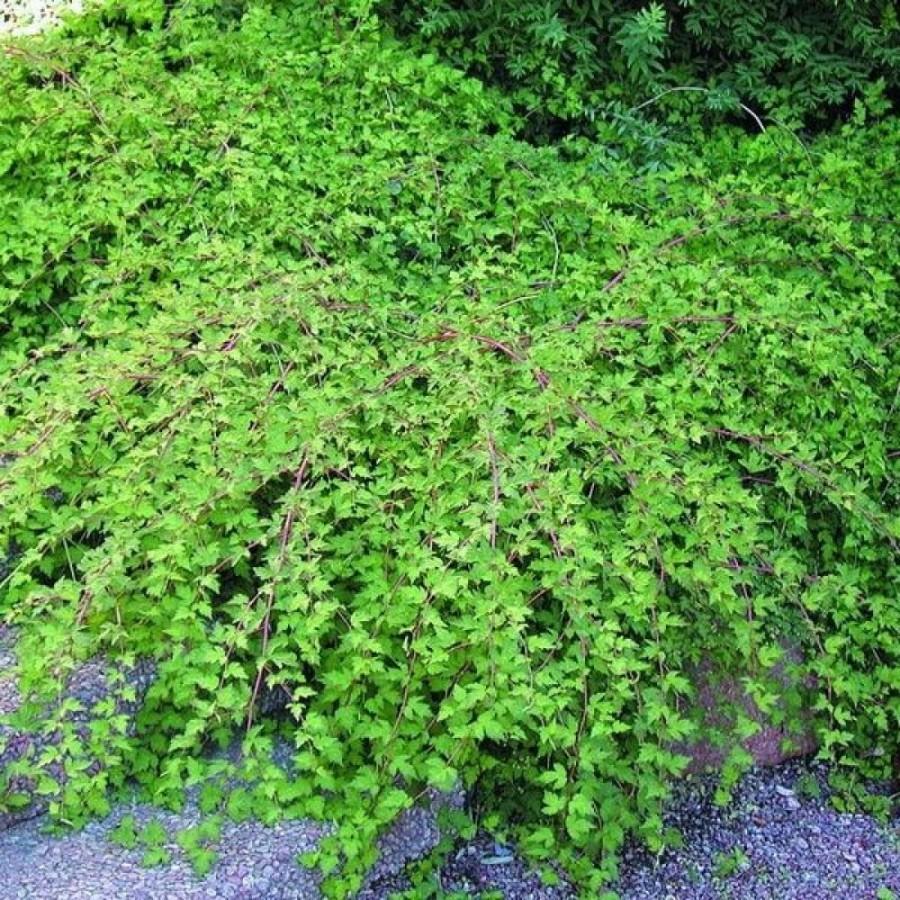
The shrub needs regular watering
To ensure that the soil retains natural moisture, mulch is placed in the tree trunk circle - sawdust, grass clippings, peat. It is also recommended to periodically loosen, especially after heavy rains or watering.
It is best to feed stephanandra shrubs with organic fertilizers. For example, you can dilute bird droppings 1:20 or mullein 1:10. It is permissible to use liquid humates (according to the instructions). Feeding for stephanandra bushes is given in the following sequence:
- In early April, it is recommended to water with nitrogen-containing compounds, for example, urea 20 g per 10 liters.
- During the formation of buds, give organic matter or complex mineral fertilizer, for example, azofoska.
- After 3-4 weeks, a similar composition is added.
- At the beginning of autumn, the stephanandra bush is watered with an infusion of wood ash in the amount of 150-200 g per 10 liters.
Do I need to prune stephanandra?
The stephanandra shrub needs regular pruning, not only in spring, but also in summer. Even before the start of sap flow, at the end of March, haircuts are carried out for sanitary purposes:
- Carefully inspect the plant and remove all branches damaged by frost.
- Then the broken, dried shoots are removed.
- They prune branches that clearly thicken the crown and grow inward.
- Finally, after flowering ends, all old shoots are removed.
Wintering
The stephanandra shrub can withstand temperatures down to -28 degrees, although some varieties are less winter-hardy. Shelter in regions with a mild climate in the south, in the Lower Volga and Black Earth regions is not necessary. In the middle zone, and even more so in the Urals and Siberia, shrubs should be prepared for winter:
- Perform trimming.
- Treat with fungicides against fungi.
- Bend long branches and pin them to the ground.
- Cover with spruce branches, dry litter, and stretch agrofibre.
Diseases and pests
The stephanandra bush does not suffer from diseases so often. But since the plant needs abundant watering, this can have a bad effect on the condition of the roots, causing rot or powdery mildew. Therefore, in early spring and autumn, for prevention, it is recommended to carry out fungicide treatments:
- "Maksim";
- "Tattu";
- "Ordan".
Insects pose virtually no danger to the bush. But sometimes it can suffer from aphids.If signs of invasion are detected, treatment should be carried out with the following drugs (one to choose from):
- "Colorado";
- "Inta-Vir";
- "Decis".
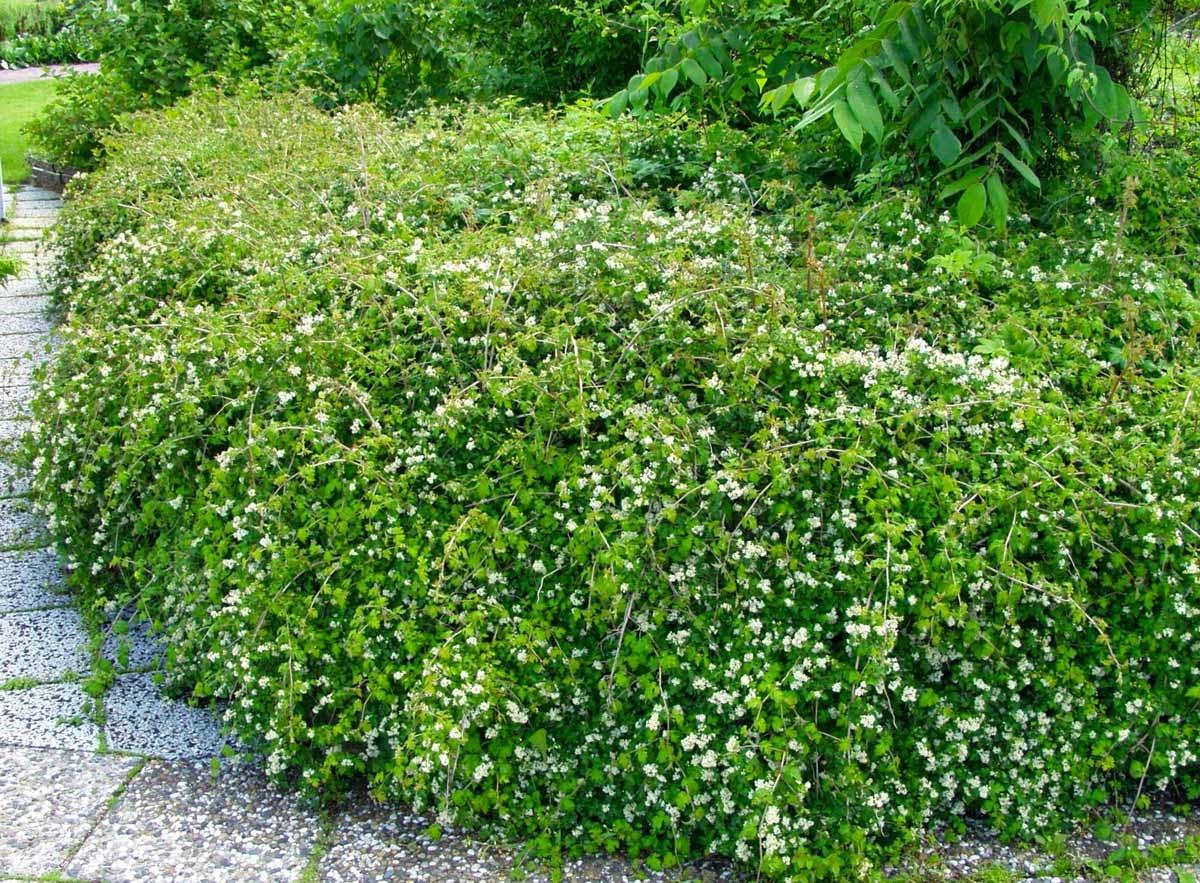
The shrub needs regular watering
Stefanandra is rarely affected by diseases and insects
Reproduction methods
There are several ways to propagate stephanandra shrubs. In the simplest case, it can be propagated by cuttings or layering. But some gardeners even grow from seeds.
Growing from seeds
It should be noted right away that the seeds for obtaining stephanandra shrubs should not be collected independently. It is better to purchase them in a specialized store in late spring. They do not need preliminary preparation - they can be sown immediately in open ground in mid-May.
The main stages are:
- Mark a flower bed and make grooves 1-1.5 cm deep.
- Plant the seeds at a distance of 5-10 cm.
- Water and cover with film.
- When seedlings appear, the shelter is removed and thinned out, leaving only strong seedlings.
- Continue to water regularly.
- For the winter, cover with a dense layer of mulch.
- Next spring they are planted in permanent places.
Propagation of stephanandra by cuttings
To propagate stephanandra shrubs by cuttings, proceed as follows:
- In early June, young shoots 10-15 cm long are cut off.
- Make a beveled bottom cut and a straight top cut.
- Place it overnight in a solution of a growth stimulator, for example, Epin.
- Planted in fertile soil, covered with a jar.
- Constantly ventilate and water.
- At the beginning of September they are transplanted to a new place.
- In October, they are carefully mulched for the winter.
Reproduction by layering
There is also a way to propagate stephanandra shrubs by layering. The instructions are:
- In early May, several trenches 10 cm deep are marked.
- Healthy shoots are placed in them, pinned with metal staples.
- Cover with fertile soil, leaving only the tips on the surface.
- Then, at the end of summer, all the rooted parts are separated from the mother bush and transferred to a new place.
- Mulch for the winter.
What does stephanandra go with in landscape design?
Due to the ability of the branches to droop, stephanandra is often used as a ground cover shrub. Visually, it resembles a large hummock that has sprung long shoots. In garden design, this plant is used both separately and in combination with other crops. Stephanandra combines especially well in the landscape with the following plants:
- hosts;
- chrysanthemums;
- dicenters;
- astilbe;
- peonies of different varieties;
- decorative conifers, for example, thuja, dwarf spruce.
Conclusion
Photos and descriptions of the stephanandra bush indicate that it is a low and very spreading plant. Well suited for planting in remote and central parts of the garden, next to paths and on the shore of a country pond. Caring for a shrub is not very difficult, so even a novice gardener can cope with its cultivation.
